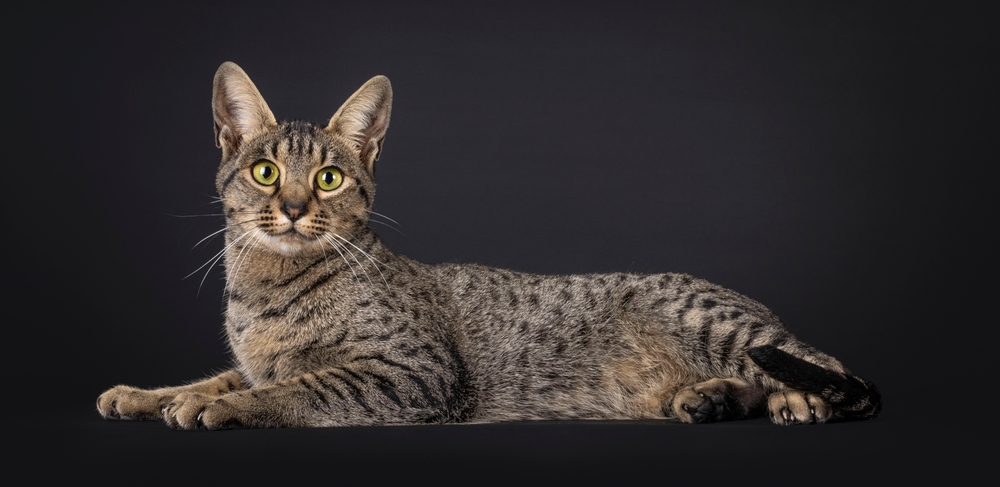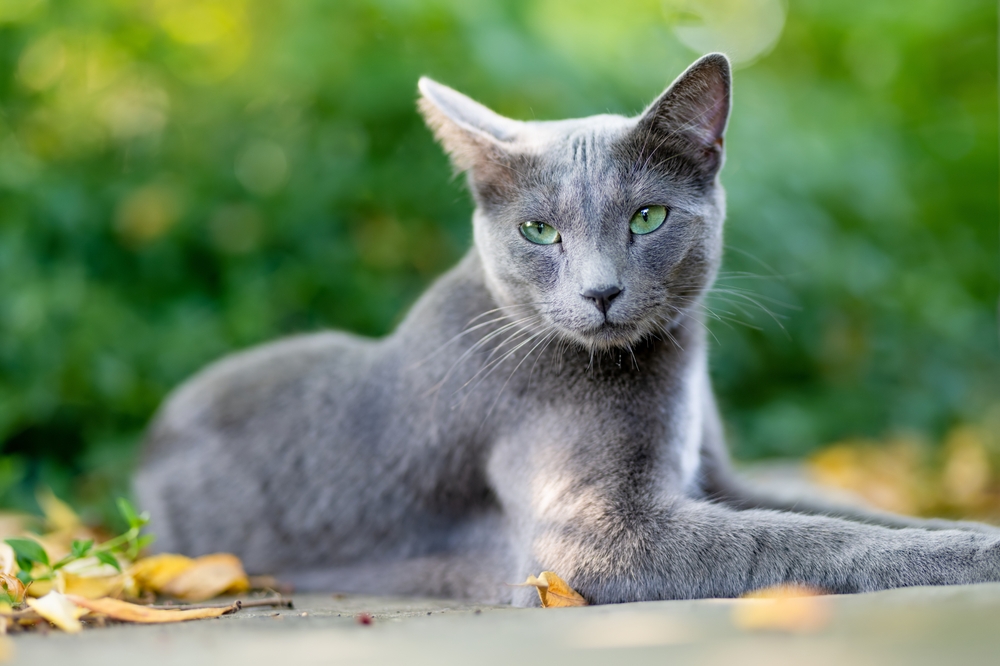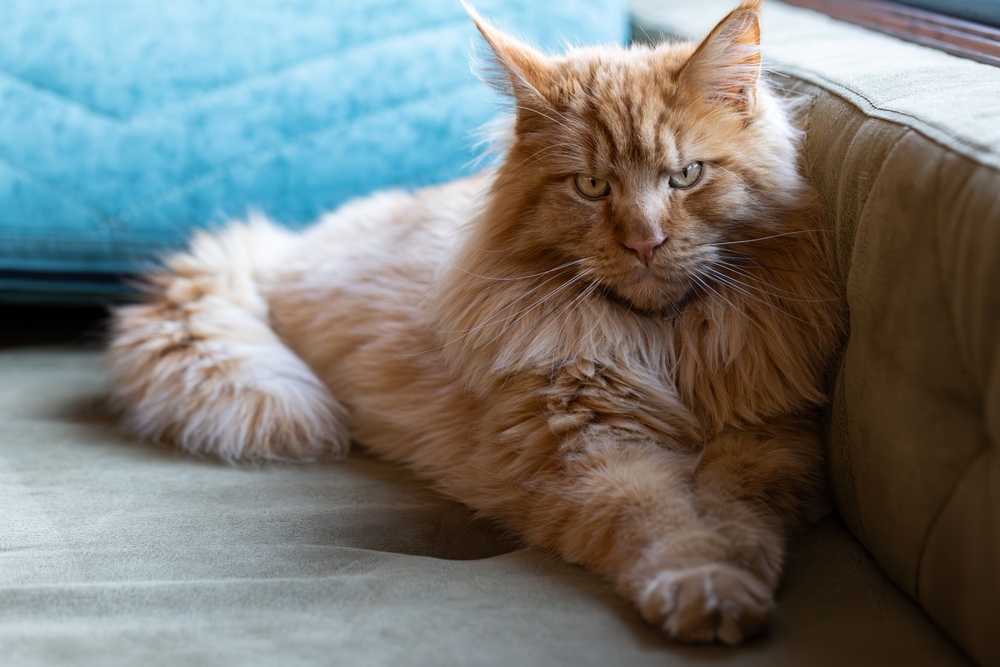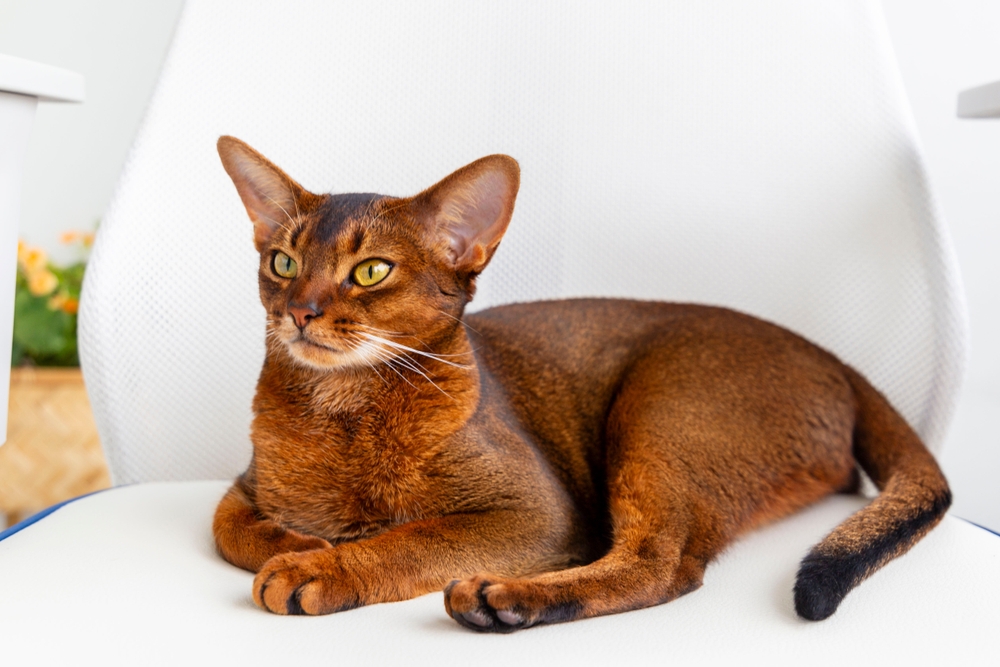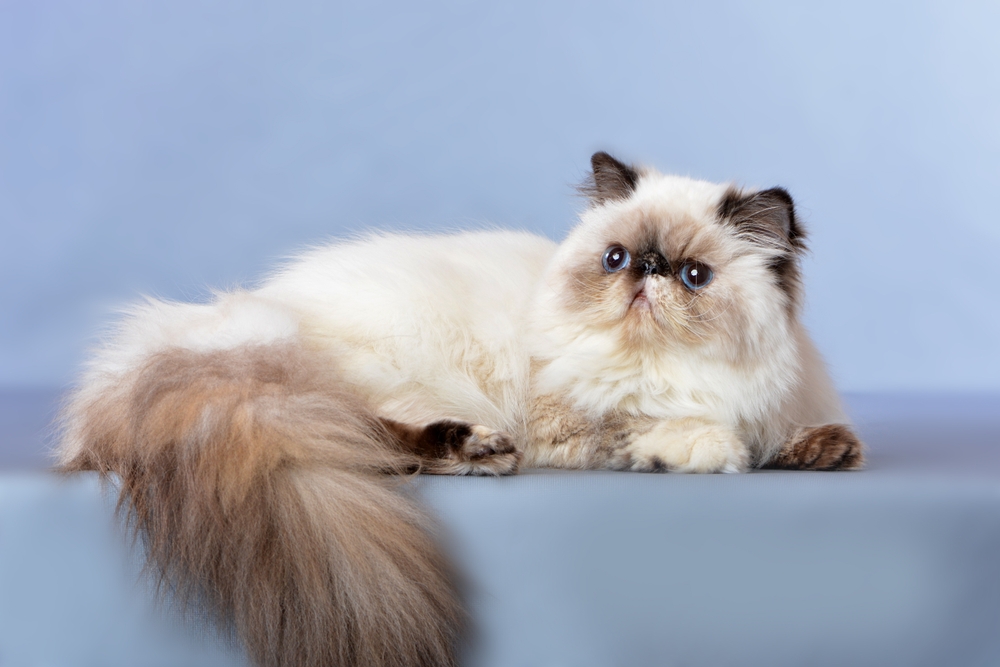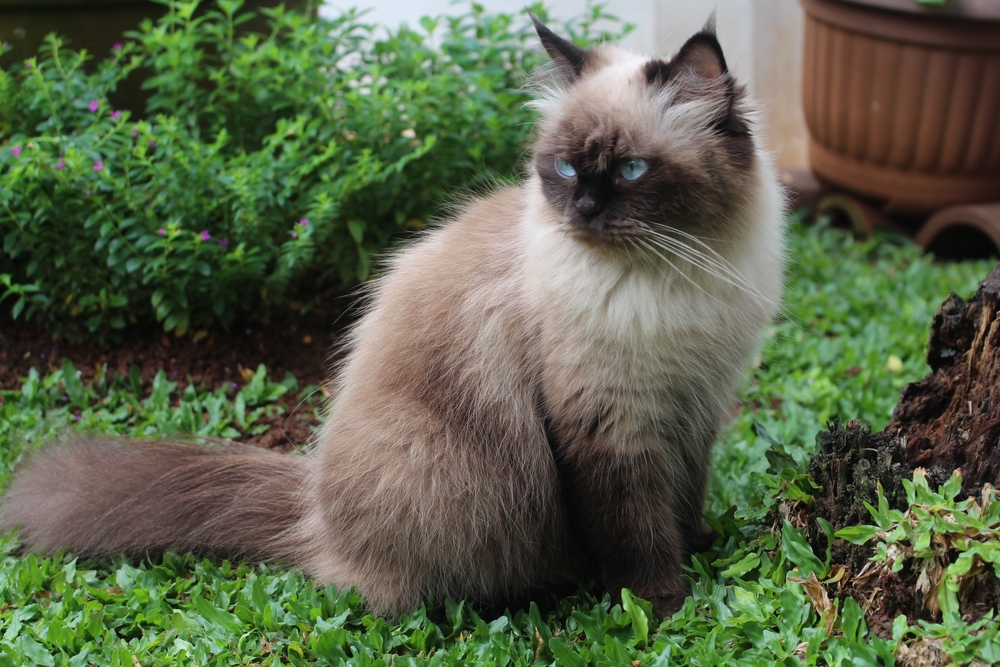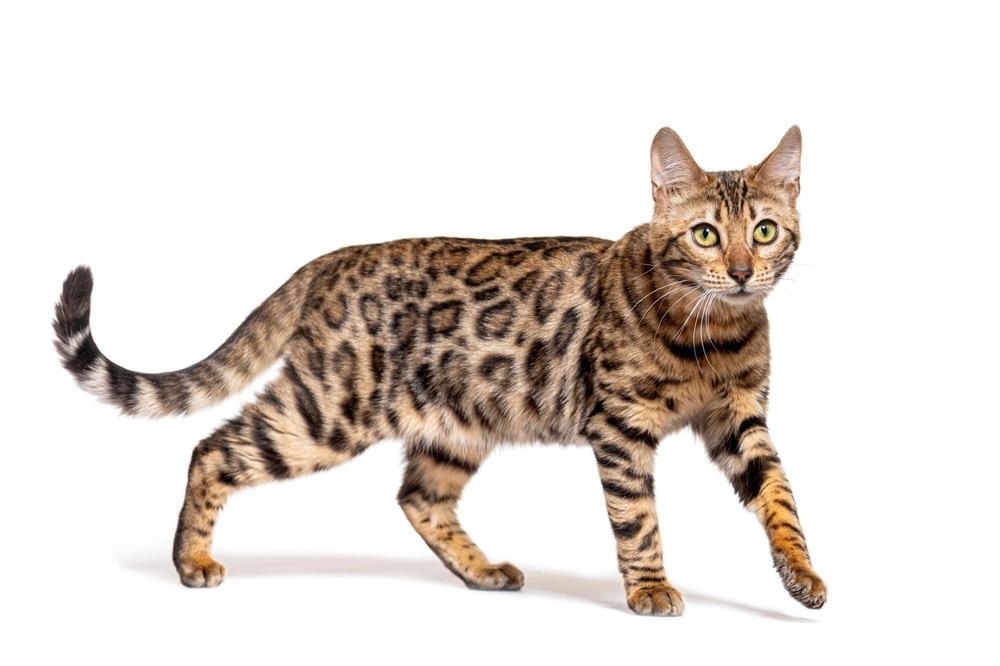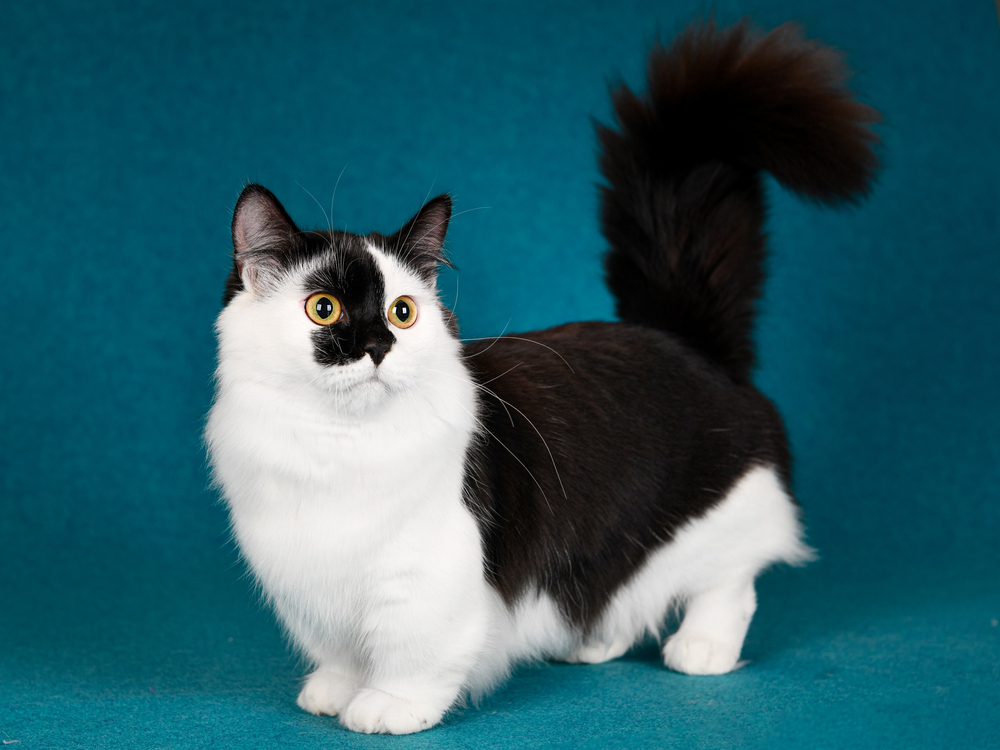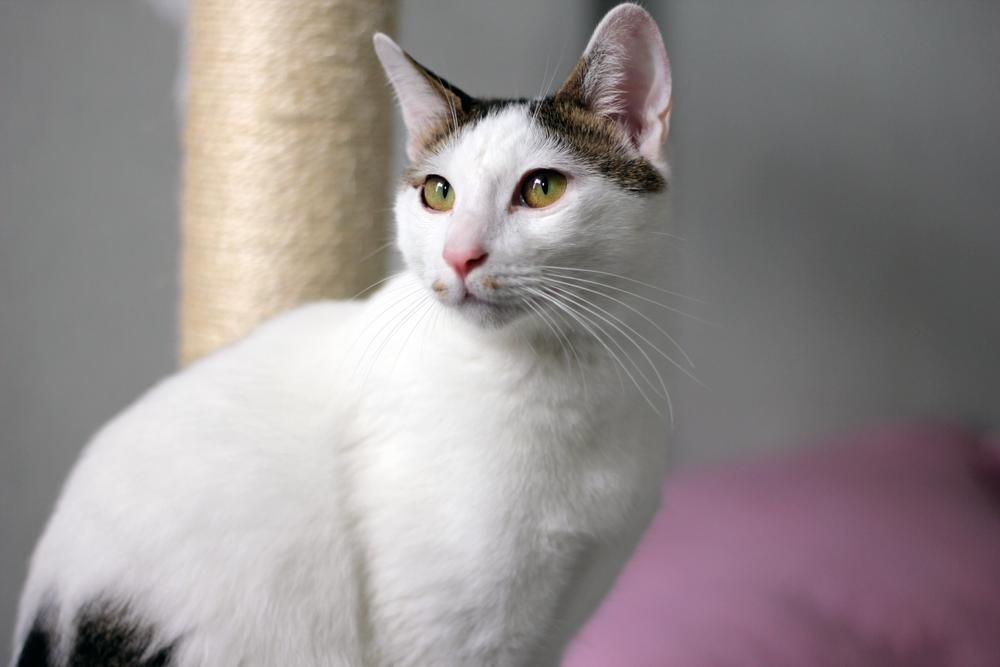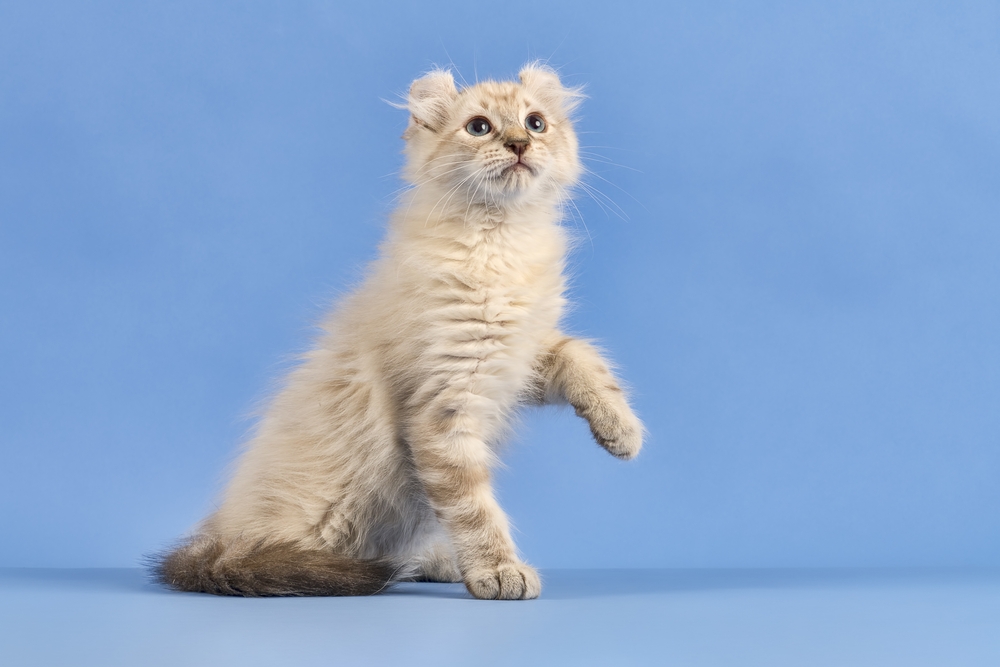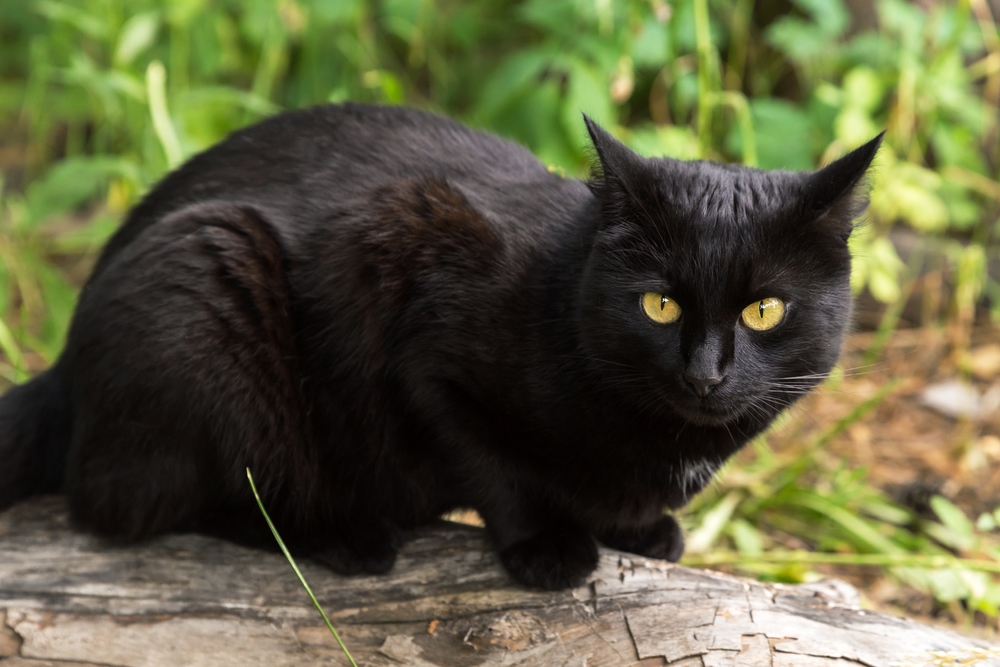The Savannah’s closest wild relative is the African serval (Leptailurus serval), which contributes to its tall stature, spotted coat, and large ears. Among domestic breeds, it is most similar to the Ocicat and Bengal, which also have exotic spotted patterns but without the serval ancestry.
About
The Savannah cat is an exotic, hybrid breed admired for its wild appearance, tall stature, and spirited personality. Developed from a cross between the domestic cat and the African serval (Leptailurus serval), the Savannah has a long, lean, muscular body, large ears set high on the head, and a striking spotted coat reminiscent of wild felines. The coat is short, sleek, and comes in shades of gold, silver, or smoke, with bold black or dark brown spots. Their long legs and tall frame often make them appear larger than most domestic breeds.
The Savannah (Felis catus), part of the family Felidae, first appeared in the 1980s when breeder Judee Frank crossed a male serval with a domestic Siamese cat. Recognized by The International Cat Association (TICA) in 2001, Savannahs are classified by “filial” generations (F1, F2, etc.), which indicate how closely related they are to their wild serval ancestor. The closer the relation, the more pronounced the wild traits in both appearance and temperament.
Savannahs typically weigh between 12–25 pounds (5.4–11.3 kg), with males generally larger than females. They are highly active, intelligent, and playful, often displaying dog-like traits such as leash training, fetching, and loyalty to their families. Their strong hunting instincts and high energy levels mean they need plenty of space, stimulation, and interaction to thrive.
While affectionate and social with their owners, Savannahs can be cautious around strangers. They bond deeply with their families and are known to follow their humans around, jump to impressive heights, and explore every corner of their environment.
With their exotic looks, intelligence, and boundless energy, Savannah cats are best suited to experienced, active households ready to meet their unique physical and emotional needs.
Physical Characteristics
Coat: The Savannah has a short to medium-length coat that is sleek, smooth, and dense. Its most striking feature is the bold spotted pattern, reminiscent of its wild ancestor, the African serval. Coat colors include brown spotted tabby, silver, black, and smoke, with dark spots contrasting against a lighter background.
Face: They have a triangular face with a long neck, tall nose bridge, and large, expressive eyes. Distinctive “tear-streak” markings run from the inner corners of the eyes down to the whisker pads, similar to those of wild servals. Eye colors range from gold and green to brown, with some showing darker eyelid markings for emphasis.
Body: Savannahs are tall, long, and muscular, giving them a strikingly wild, athletic appearance. Their long legs, deep chest, and slim torso make them one of the tallest domestic cat breeds.
Ears: Large, upright, and rounded at the tips, set high on the head. The backs of the ears often display bold ocelli (eye-like markings), another trait from their serval heritage.
Tail: Medium length, thick at the base, tapering to a rounded black tip, usually marked with dark rings.
Size:
-
Length: 20–22 in (51–56 cm) from head to base of tail.
-
Height: 14–17 in (36–43 cm) at the shoulder, making them much taller than average domestic cats.
Weight:
-
Adult Female: 12–19 lbs (5.4–8.6 kg).
-
Adult Male: 15–25 lbs (6.8–11.3 kg), with some early-generation males reaching up to 30 lbs (13.6 kg).
The Savannah Cat’s long legs, large ears, bold spots, and wild serval traits make it one of the most exotic and unique domestic cat breeds, often resembling a miniature cheetah or leopard.
Reproduction
Mating and Courtship:
Savannah cats are hybrids, originally bred by crossing a domestic cat with an African serval. Because of this, reproduction varies greatly depending on the generation (F1, F2, F3, etc.):
-
Early generations (F1–F3): Males are often infertile, while females are fertile. Breeding programs typically use fertile females from these generations with servals or later-generation Savannah males.
-
Later generations (F4 and beyond): Both males and females are fertile and breed like standard domestic cats.
Breeding Season:
They can breed year-round, though queens may cycle more frequently in spring and summer.
Gestation:
The gestation period lasts about 65–75 days, slightly longer than the typical domestic cat (63–65 days).
Birth of Kittens:
Litter sizes are typically 1–5 kittens, smaller in early generations (F1–F2) due to hybridization, but later generations may have larger litters (up to 6–8 kittens).
Care and Nurturing:
Kittens are born weighing about 3–4 oz (85–113 g), blind and dependent. Queens provide attentive care, though early-generation kittens may be smaller and require closer monitoring.
Weaning and Social Development:
-
Eyes open at 7–10 days.
-
Walking begins at 3 weeks.
-
Solid food is introduced by 4–5 weeks, with weaning usually complete at 8–10 weeks.
-
Socialization is especially important for Savannah kittens, as they inherit strong serval traits—early handling helps them adjust to domestic life.
Independence:
By 12–14 weeks, kittens are ready for adoption. Many breeders wait until at least 14–16 weeks, especially for F1–F3 kittens, to ensure they are properly socialized and strong enough for rehoming.
The Savannah Cat’s reproductive cycle is influenced by its hybrid status, with early generations requiring special breeding strategies and later generations (F4 and beyond) following a more typical domestic cat cycle.
Lifespan
Lifespan in the Home:
Savannah cats typically live 12–20 years, making them one of the longer-lived hybrid cat breeds. Later generations (F4 and beyond) tend to have the most stable, domestic-like lifespans, often reaching the upper end of this range.
Lifespan in Outdoor or High-Risk Settings:
When allowed outdoors, Savannahs may only live 7–12 years due to risks such as traffic, predators, diseases, and theft (since they are highly valuable and sought after).
Factors Affecting Longevity:
-
Generation: F1–F3 hybrids may be more prone to hybrid fertility issues and stress-related health problems, while later generations (F4–F6) are more robust.
-
Genetics: Generally healthy, though some may inherit tendencies toward hypertrophic cardiomyopathy (HCM)or digestive sensitivities.
-
Size & Energy Level: Being large and highly active, they require high-protein diets and regular stimulation to maintain health.
-
Diet & Exercise: A nutrient-rich, meat-based diet and plenty of physical and mental enrichment help prevent obesity and stress.
-
Preventive Care: Regular veterinary visits, dental care, and vaccinations are vital, especially given their hybrid background.
-
Environment: Indoor living with secure enclosures or supervised outdoor access (catios, harness walks) is ideal to protect them and channel their adventurous instincts safely.
Notable Longevity:
With proper care, some Savannah cats have been reported to live beyond 20 years, especially later-generation cats raised in safe, enriched environments.
The Savannah Cat’s hybrid vigor, athletic build, and active lifestyle contribute to a long, healthy life, provided they are cared for with proper nutrition, enrichment, and safety measures.
Eating Habits
Diet:
Savannah cats are obligate carnivores with high energy needs. They thrive on a protein-rich, meat-based diet, ideally with minimal fillers. Many breeders recommend premium grain-free commercial cat food or a carefully balanced raw diet. Protein sources such as chicken, turkey, beef, and fish are excellent choices.
Feeding Frequency:
-
Kittens (up to 6 months): 3–4 small meals per day to fuel rapid growth.
-
Adults (6 months–10 years): 2 meals per day, with portions tailored to their high metabolism and activity levels.
-
Seniors (10+ years): Smaller, more frequent meals with senior-friendly formulas for joint and kidney health.
Special Considerations:
-
High Activity Level: Savannahs burn more calories than the average domestic cat due to their large size and athletic energy. They often require larger food portions to maintain muscle and stamina.
-
Digestive Sensitivities: Some Savannahs may have sensitive stomachs, especially early-generation hybrids. A consistent, high-quality diet reduces risks of digestive upset.
-
Hydration: Wet food or raw diets help maintain hydration, while fountains encourage water intake, supporting urinary and kidney health.
-
Supplements: Some owners of early-generation Savannahs incorporate taurine-rich foods and calcium supplements into raw diets for complete nutrition.
Treats:
Freeze-dried meat, cooked poultry, or high-protein commercial treats are suitable in moderation, making up no more than 10% of daily calories.
Feeding Enrichment:
Savannahs are highly intelligent and playful, so puzzle feeders, treat-dispensing toys, and food-hiding games are ideal. They also enjoy climbing and foraging activities that mimic hunting behaviors.
The Savannah Cat’s eating habits reflect its wild ancestry and athletic needs—they require nutrient-dense, protein-heavy meals paired with interactive feeding to keep them both physically and mentally satisfied.
Uniqueness
Hybrid Heritage:
The Savannah is a cross between the African serval and a domestic cat, making it one of the most exotic hybrid cat breeds in the world.
Striking Appearance:
Its tall, lean body, long legs, and bold spotted coat give it a miniature wildcat look, often compared to a cheetah or leopard. Large, upright ears with ocelli (eye-like markings) on the back emphasize its serval ancestry.
Exceptional Size:
Savannahs are among the tallest domestic cats, with some early-generation males reaching over 20 inches at the shoulder and weighing up to 30 lbs (13.6 kg).
Dog-Like Behavior:
They are highly intelligent and can be trained to walk on leashes, play fetch, and respond to commands, making them more interactive than most cat breeds.
Athleticism:
Savannahs are powerful jumpers, capable of leaping 6–8 feet (1.8–2.4 m) in a single bound. Their agility and curiosity mean they often explore high places in the home.
Unique Personality:
They are adventurous, social, and bond strongly with their families. Unlike more independent breeds, Savannahs are known for their loyalty and love of active engagement.
Generational Differences:
The behavior and size of Savannahs vary depending on their generation:
-
F1–F3 (early generations): Larger, wilder in appearance and behavior.
-
F4 and beyond: More domesticated in temperament while keeping exotic looks.
Rare and Prestigious:
Because of their hybrid origins and careful breeding requirements, Savannahs are rare and often considered a luxury breed, admired worldwide for their exotic yet companionable nature.
The Savannah Cat’s mix of wild heritage, towering size, exotic beauty, and trainable personality makes it one of the most unique and captivating cat breeds ever developed.
Be the First to Share Photos of This Species.
FAQ’s
1. What is the closest species or breed to the Savannah Cat?
2. How does the Savannah Cat compare to other cats?
Savannahs are much larger, taller, and more athletic than most domestic cats, often towering over breeds like the Maine Coon. They are highly intelligent, trainable, and adventurous, with dog-like traits such as leash walking and playing fetch. Unlike calmer breeds such as Persians, Savannahs require constant stimulation, climbing opportunities, and interactive play to stay happy.
3. What national parks or regions provide the best chance to see a cat resembling the Savannah?
Since the Savannah descends partly from the African serval, the best places to see its wild counterpart are in African savanna parks:
-
Kruger National Park, South Africa – High density of African servals in grassland and woodland areas.
-
Serengeti National Park, Tanzania – Prime habitat for servals, often spotted in tall grass or near wetlands.
-
Okavango Delta, Botswana – A rich ecosystem where servals thrive alongside other African wildcats.



































































